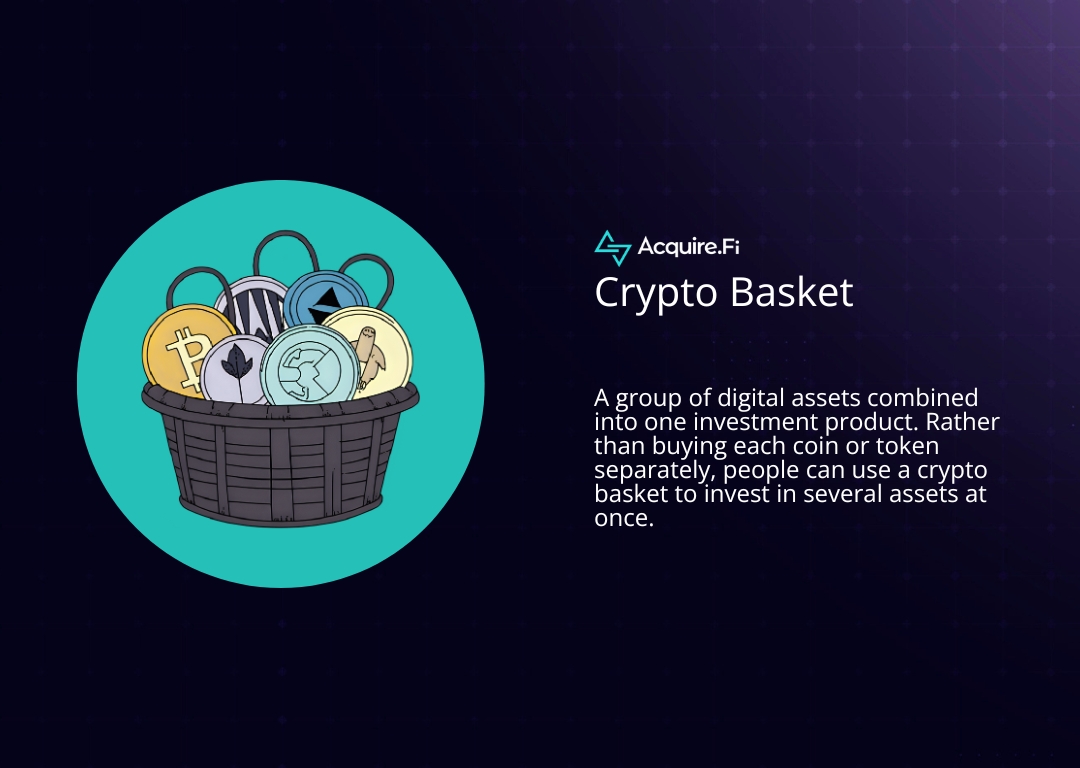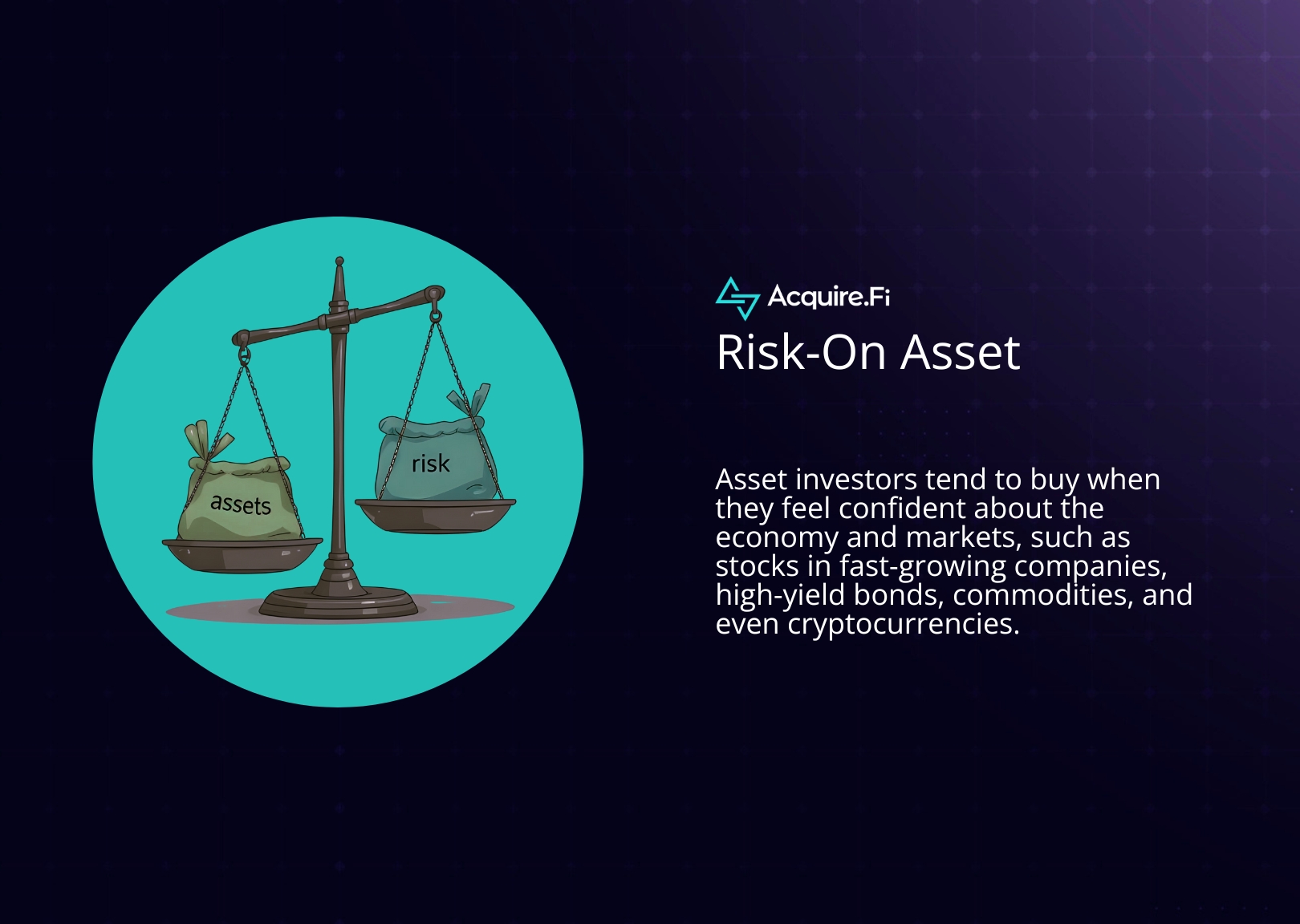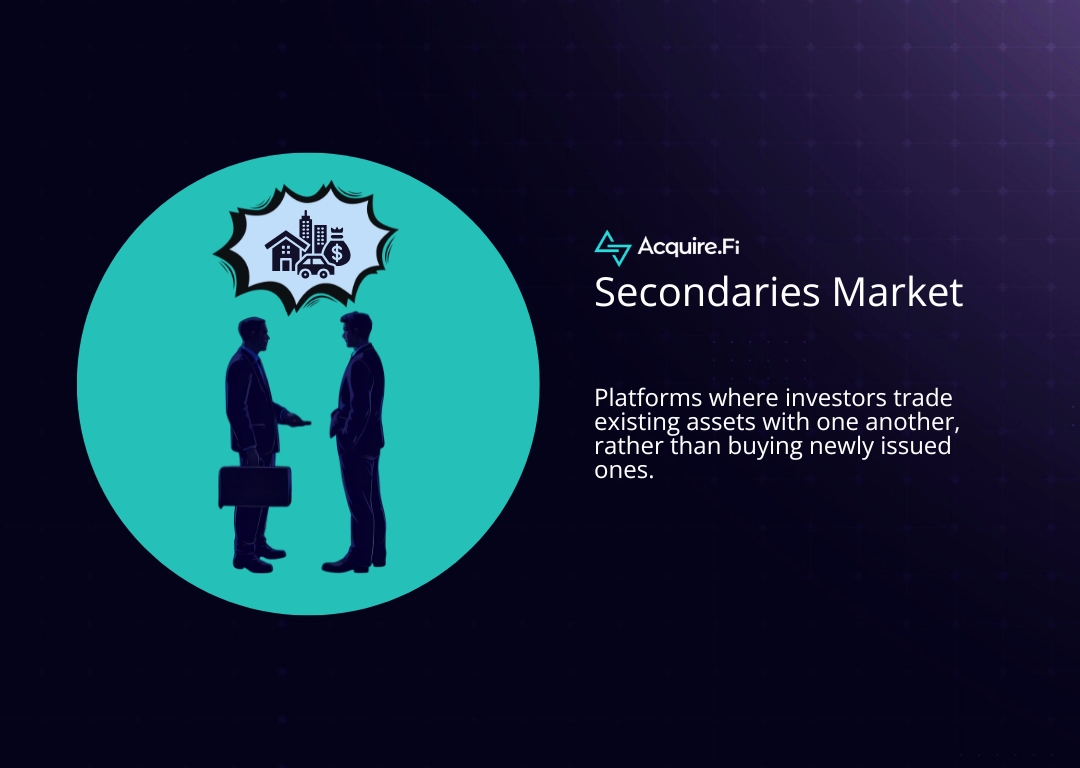What is a Risk-On Asset?
A risk-on asset is an investment typically bought when investors feel confident about the economy and markets. These are stocks in fast-growing companies, small-cap shares, high-yield (“junk”) bonds, emerging-market assets, cyclical commodities, and cryptocurrencies.
Researchers and central-bank economists use “risk-on/risk-off” to describe swings in economic risk taking across markets worldwide. In “risk-on” phases, investors’ appetite for risk increases, causing money to shift into assets that can fluctuate more in price but offer higher potential returns. In risk-off cycles, volatile assets often fall together as investors retreat to safe havens like top-quality government bonds, the U.S. dollar, the Japanese yen, the Swiss franc, or gold.
What’s the appeal of investing in risk-on assets?
Risk-on assets offer more potential return because, despite uncertainties, investors believe they will grow and market volatility will stay contained. Economic optimism historically lifts valuations and compresses risk premia. Easier financial conditions and expectations of a soft landing can also fuel more investor risk-taking and buoyant markets.
In stable market conditions, investors may flock to companies and projects earlier in their lifecycles, such as new tech, new business models, frontier economies, and emerging commodities demand. That linkage to future growth is part of the charm.
When investors flock to risk-on assets
Rsk-on behavior is more prevalent when growth data stabilizes or improves, inflation trends down, and central banks tilt dovish. Falling inflation and interest rate cuts can also keep market volatility low and push investors toward riskier assets.
Risk-on stretches emerge when government policies appear predictable and geopolitical risk subsides. Trading-desk primers summarize the usual drivers such as upbeat economic data, easier central-bank policy, strong earnings, and fewer shocks.
Finally, looser financial conditions, low equity volatility, and ease of getting funding tend to coincide with stronger demand for risk.
Examples of risk-on assets
Risk-on assets come in many different forms. This section covers the most common types, such as:
Stocks with growth sensitivity
Shares of fast-growing and economically sensitive companies (tech, consumer discretionary, select industrials) often lead in risk-on phases. A few notable examples are:
- NVDA (NVIDIA), an AI/GPU manufacturer
- CRWD (CrowdStrike), a cybersecurity firm
- SHOP (Shopify), an e-commerce platform
- NOW (ServiceNow), a workflow software
Small-cap indexes have also historically outperformed larger-cap peers during risk-on markets. These small-cap indexes reflect higher sensitivity to domestic growth and financing conditions:
- Russell 2000 Index (RUT)
- S&P SmallCap 600 (SML)
- CRSP US Small Cap
- Dow Jones U.S. Small-Cap Total Stock Market
Emerging-market (EM) assets
Emerging-market assets are investments issued by countries whose economies and capital markets are still developing. They offer higher growth potential, but also higher risks due to currency, politics, liquidity, and governance.
When global conditions are calm and funding is easy, capital tends to flow from advanced economies into EM stocks and bonds. During stress, those flows can reverse.
Here’s a handy list of emerging-market (EM) assets with tickers and sorted by type:
Broad EM equity (indexes & ETFs)
Individual EM equities
Country equity ETFs
Currencies (spot or NDFs)
- INR (Indian rupee)
- MXN (Mexican peso)
- IDR (Indonesian rupiah),
- THB (Thai baht)
- PLN (Polish zloty)
Junk corporate bonds
High-yield bonds, also called “junk” bonds”, are corporate bonds rated below investment grade (BB+/Ba1 or lower). They’re typically issued by leveraged companies, cyclical businesses, or former investment-grade issuers (“fallen angels”). Junk bonds pay higher coupons to compensate for greater default risk, weaker covenants, and often call features.
Below are examples of high-yield bonds and their ticker:
Broad ETFs (USD corporates)
- SPDR Bloomberg High Yield Bond ETF (JNK)
- iShares Broad USD High Yield Corporate Bond ETF (USHY)
- VanEck Global Fallen Angel High Yield Bond ETF (ANGL)
- iShares 0-5 Year High Yield Corporate Bond ETF (SHYG)
High-yield munis & EM credit
- VanEck High Yield Muni ETF (HYD)
- VanEck Emerging Markets High Yield Bond ETF (HYEM)
- iShares J.P. Morgan EM Local Currency Bond ETF (LEMB)
Cyclical commodities
Cyclical commodities are raw materials whose price and demand are derived from end markets. Trading them is profitable when growth, capex, construction, and manufacturing are booming.
The best example of a cyclical commodity is copper, whose price is primarily influenced by the health of the global economy due to its widespread applications, such as electricity and construction. Copper is famously nicknamed “Dr. Copper” because a rising price means a healthy economy, while a decline indicates the opposite.
Other examples of cyclical commodities are:
Cryptocurrencies
Bitcoin and other large-cap crypto assets have often behaved like high-beta risk assets, rising with equity optimism and falling when uncertainty spikes. Several academic studies find that Bitcoin has not reliably acted as a safe haven during crises, instead moving with risk-on/risk-off tides.
What happens to risk-on assets during economic uncertainty?
When war headlines or economically shocking events happen, money typically moves out of risk-on assets and into perceived safe havens like gold and long-dated U.S. Treasuries. However, cyclical commodities, EM assets, and high-yield bonds sell off together. Reuters captured that pattern during mid-2025 Middle East tensions when the price of safe-haven assets soared while risk-sensitive assets struggled.
The FX market tells the same story. During uncertainty, funding-currency dynamics and demand for liquidity can push up safe-haven currencies (USD, JPY, CHF).
As for cryptocurrencies, several studies around economic shocks documented a positive co-movement between major crypto and equities, consistent with risk-on behavior. For instance, the price of memecoins and tokens of new blockchain projects fell at the end of quantitative easing in 2022. Investors sold billions of dollars' worth in public exchanges and crypto secondary marketplaces. Even the price of Bitcoin and high-market-cap altcoins fell as both institutional and retail investors moved their money to safer assets.
How to recognize a turn toward risk-on (or away from it)
When inflation trends down and central banks pause or cut interest rates, financial conditions usually loosen. The IMF has recently highlighted how that backdrop can lift valuations and compress volatility. If that’s happening and headline risk is calm, risk-on assets often get a tailwind.
Another “feel-good” sign for risk-on phases is the booming price of small-cap stocks and cyclical commodities. MSCI’s work shows small-caps historically outperform during risk-on environments.
Finally, tightening or easing in credit spreads and funding markets often precedes significant shifts in equity and EM sentiment because they change the cost of risk. That multi-market, cross-asset angle is precisely what modern risk-on/risk-off indices try to capture.













.webp)